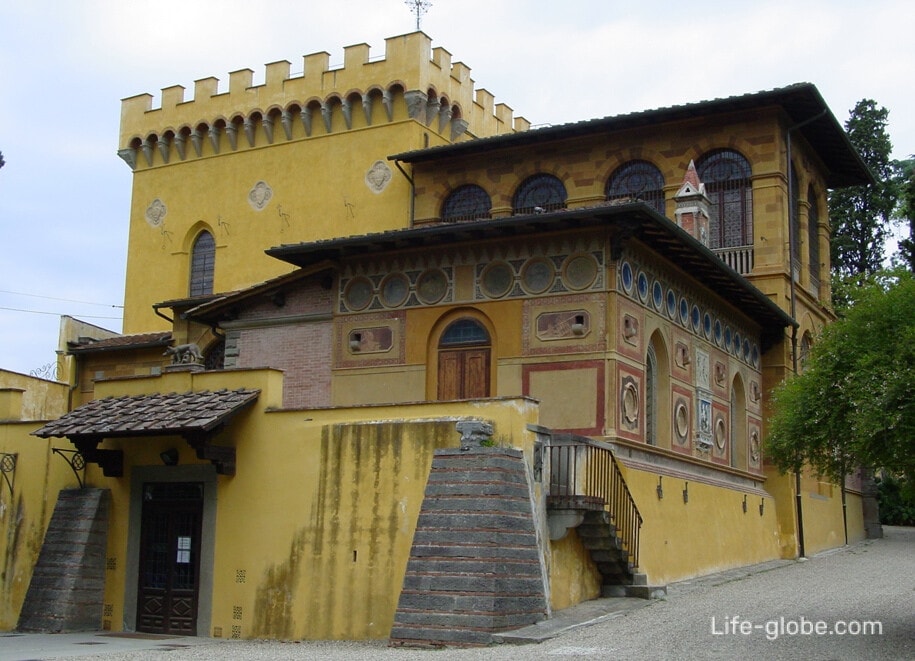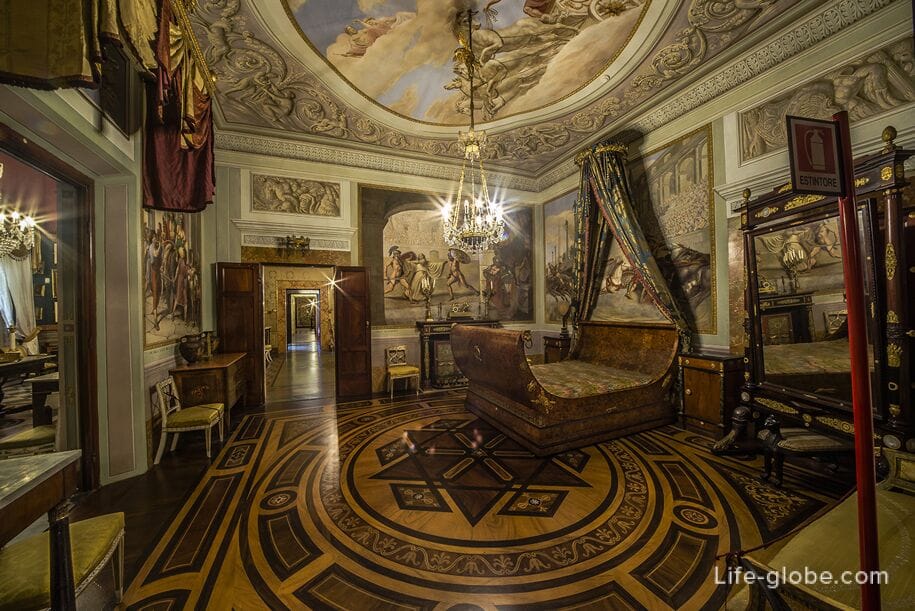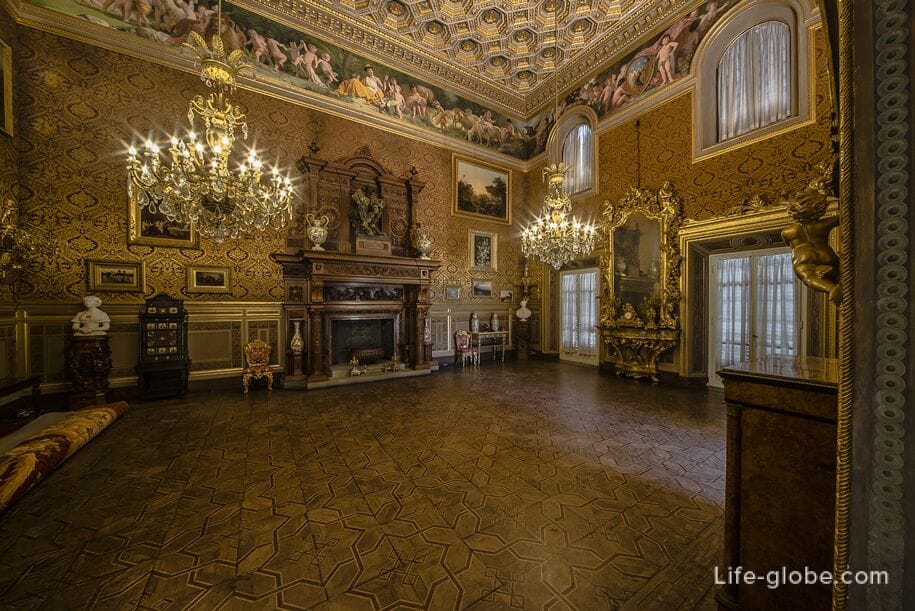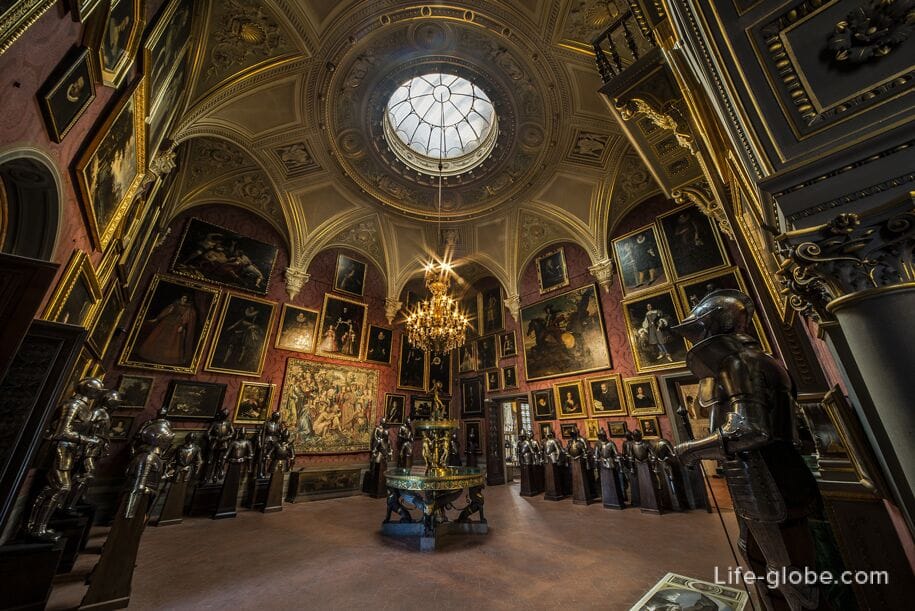
The Stibbert Museum (Museo Stibbert) is a museum in Florence, located in a historic villa with a park, founded by the collector Frederick Stibbert and containing collections of weapons, artifacts, antiquities and works of art of Eastern and Western civilizations.
The museum is located at Villa Montughi in Florence, which was once the home of the Stibbert family (1838-1906).
Frederick Stibbert's father was English, and his mother was Italian. Frederick Stibbert came from a military family: his father was a colonel in the prestigious Coldstream Guards, his grandfather was the Governor-General of Bengal, India, from where the family's wealth, inherited by young Stibbert, began when he was twenty years old.
Stibbert himself was a collector and founded a museum from his collection in the family villa. The collection was so large that Stibbert had to expand the villa. After his death, Stibbert bequeathed the villa with the adjacent park and his collections to the city, thus laying the foundation of the museum. Subsequently, the collection increased due to various gifts and purchases.
Currently, the museum is managed by a foundation created by Stibbert's will.
The villa itself is an important example of the figurative style of the nineteenth century, where some of the best Florentine artists of their time, such as architect Giuseppe Poggi, artists Gaetano Bianchi and Annibale Gatti, who painted numerous frescoes, and sculptor Augusto Passaglia, worked throughout history.


The villa, which was once Stibbert's home, has 57 rooms featuring collections from around the world. Most of the walls are covered with leather and tapestries, and the neo-Gothic and neo-Renaissance rooms are filled with artifacts.
The main collection of the museum is mainly a hunting genre, which was a passion of Frederick Stibbert, but also includes other collections.
Currently, the collection consists of about fifty thousand items, mostly on display to museum visitors.
In the halls of the museum there are paintings, including still lifes and portraits; a collection of weapons and armor; valuable furniture, porcelain, Tuscan crucifixes, collections of poems and songs, flags, Etruscan artifacts, costumes and clothes worn by Napoleon I, King of France; as well as household items of European, Islamic and East Asian civilizations, especially Japanese.
Among the paintings in the museum are paintings by Sandro Botticelli, Carlo Crivelli ("Two Saints from the polyptych of the Camerino Cathedral", circa 1490), Domenico Beccafumi, Luca Giordano, Alessandro Allori, Pieter Brueghel the Younger, Neri di Bicci and Pietro Lorenzetti.




The most extensive collection includes European, Oriental, Islamic and Japanese weapons and armor from the 15th to the 19th centuries.
The Cavalcade Hall is a large hall filled with 14 knights of the 16th century on horseback and 14 infantrymen dressed in armor and holding weapons. The collection of samurai armor has more than 80 costumes and hundreds of swords.



Adjacent to the villa, where the Stibbert Museum is located, is the Stibbert Museum's English park (Giardino del Museo Stibbert), which was renovated at the same time as the villa's expansion works. Then, according to the project of the architect Poggi, the garden was transformed from a simple into a romantic English park, enlivened by temples, caves and water structures.
The lemonade in the park, where citrus fruits and the most delicate plants were once stored, is an elegant neoclassical building.
The stable was built by order of Stibbert and his mother, who were passionate about valuable horses, and was restored in 1858.
The Hellenistic temple in the park was created according to classical models with a central plan topped with a dome covered with majolica tiles.
An Egyptian temple built by Stibbert between 1862 and 1864, full of Egyptomania, towers over the lake at the bottom of the park.
There are also monuments and sculptures in the park.

Entrance to the park at the Stibbert Museum is free.
Opening hours of the park: April-October from 8:00 to 19:00, November-March from 8:00 to 17:00; the park is closed every Thursday, January 1, Easter Sunday, May 1, August 15 and December 25.
Entrance to the Stibbert Museum is paid. There are discounted tickets.
Information about the opening hours of the park and the museum, the cost of tickets to the museum, conditions of visits and other information, we recommend checking on the official website of the Stibbert Museum: museostibbert.it.
Stibbert Museum address: Via Federico Stibbert, 26, 50134 Firenze FI, Italy.
Coordinates of the Stibbert Museum: 43°47'34.4"N 11°15'18.6"E (43.792883, 11.255175).
All accommodation facilities in Florence (hotels, apartments, guest houses, etc.), including in the historical center of the city and more remotely from it, can be viewed and booked here